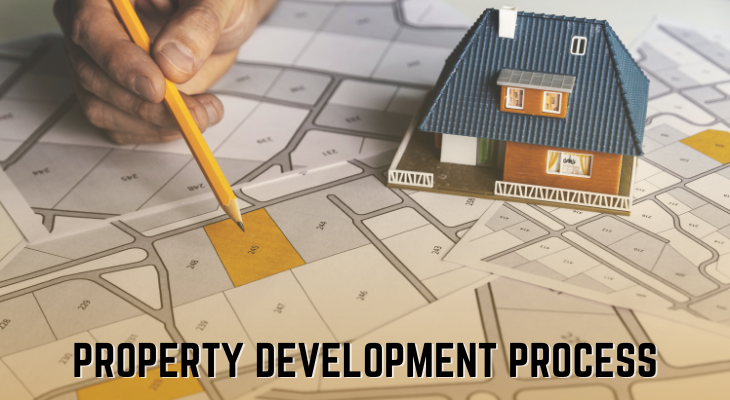Property Development Process
The Property Development Process refers to the steps that property developers use in order to find, stack, and execute a construction project. There are many procedures involved in the property development process, starting with the first step of selecting a suitable site and continuing through the process of due diligence on the project to the completion of your property development project.
Let’s take a look at all of the steps that should be covered in a basic real estate development course in order to have a better understanding of how to start a real estate development firm. Each step of the property development process, which we cover extensively in detail in my property development course, has been packaged together into a process-driven Property Development System.
The Six-Step Process for Developing Land from Scratch
Because undeveloped real estate may provide the same regular income flow as any other investment opportunity, it’s worth noting.
Due to the scarcity of natural resources, raw land is enormously valuable to investors. If you buy land in an area that is expected to expand and develop, you may be able to increase the value of your property.
Due investigation and detailed market research are essential for investors who wish to buy raw land. Paying attention to market trends is the greatest method to keep up with the times.
Knowing when to purchase will be easier if you can keep tabs on the market’s cyclical movement. Examine the most current developments in your chosen market first. Buyers are likely to be on the lookout for a property if recent development projects in the vicinity have seen a spike in interest. In addition, it’s a good idea to keep an eye on the growth in the neighboring markets.
- Now that you know what raw land is and what it may be used for, let’s go through the steps of developing raw land:
- Analyze the viability from a monetary standpoint
- Decide on pricing for your product or service.
- Secure your finance by finding out what the property is zoned for
- Build-in accordance with zoning regulations as soon as possible.
- Sell the land or property by promoting it.
1. Possibility of Making a Profit
Assessing the economic viability of raw land investment is an important first step. Before beginning any real estate investment, it’s essential to know what you want to obtain out of the deal. As a result, the market’s unpredictability will be reduced and your investment’s expenses against profit will be modeled for you. Understanding your project’s viability, including the projected expenditures and income, and the total return on investment can assist investors in success.
2. Procurement
Once you know what you’ll have to pay, as well as what you’ll get in return, you’ll be able to set a reasonable price for the deal. At this point in the process, investors need contractors to submit genuine bids for the project. This will not only give you an idea of what the job will cost, but it will also give you a maximum price.
3. Layout
It is at this stage of raw land investment that most attention is paid to the land’s design. To put it simply, this refers to the sort of property that may be built on the land, as well as the zoning regulations in the area.
A lot depends on your plans for the property and how you want to show it to potential purchasers on the way you go with zoning. Single-family, multifamily, condominium, or commercial properties are all allowed on the land depending on the zoning regulations. This might eventually impair your investing strategy as an investor. If you’re going to invest in raw property, you need to know all there is to know about zoning.
4. Financing
To get financing for a property, you need to know how you plan to utilize it. The loan-to-cost ratio is the most important consideration for investors (LTC). Loan-to-value ratio (LTC): The lender’s commitment to the project in terms of the amount of money they are willing to lend. Standard bank financing is available for owner-occupied houses even though most lenders only give a portion of the total cost (usually between 80 and 85 percent).
5. Construction
Next in line to the building is the raw land development phase. As a rule of thumb, this will include creating the site from the ground up via horizontal development (grading for roadways, curbs, and utilities). Investors should also be informed of the project’s construction finance. Contractors are often paid in increments based on the amount of work they do, including the number of stages of the project. Construction lenders often keep about 10% of the construction loan until the project is done.
6. Advertising
Marketing is the last phase in the property development process. This is where the first step is crucial. Your marketing plan will benefit from a thorough investigation of the market, the area, and the demand for rentals. An investor’s marketing strategy is essential if he or she hopes to bring in purchasers for the property. Using a realtor, internet listings, the Multiple Listing Service (MLS), newspaper ads, and even social media might be part of this strategy.

